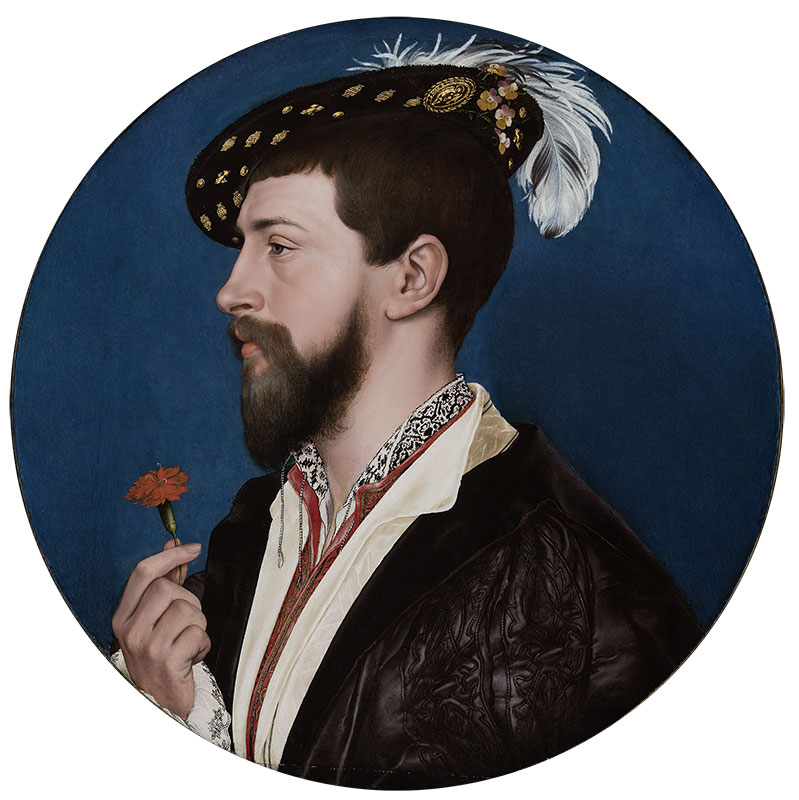
Only this sitter’s name and place of origin (Cornwall, in southwest England) are known today. Yet the complex system of symbols that Holbein developed in this work suggests that the young man might have been a poet conversant in the symbolic language of love. He wears a pink jerkin (close-fitting jacket) and a hat badge decorated with the mythological paramours Leda and the Swan. In his right hand, George holds a red carnation—a symbol of affection and betrothal. Other interpretations are also possible: the carnation may signify Christ’s crucifixion, and the pansies decorating the hat could evoke a meditation on mortality. Recent conservation of the panel allows us to fully appreciate Holbein’s vivid colors and rich surface effects—from the carefully modulated description of George’s skin to the black embroidery of his glossy, puckered jacket.
Hans Holbein the Younger (1497/98–1543)
Simon George, ca. 1530–40
Mixed technique on panel
Städel Museum, Frankfurt am Main; 1065
This is a rare opportunity to see, side by side, Holbein’s preparatory drawing and the finished portrait of one of his most enigmatic English sitters—Simon George of Cornwall. Normally separated between collections in England and Germany, the two works have been temporarily reunited for the purpose of this exhibition, inviting us to explore Holbein’s preparatory process and compare his handling of these two different media.
Holbein established the outline of George’s head and defined his facial features in the drawn study. The hat and the costume were worked out in much greater detail in the painted roundel. The painting also differs from the drawing in the greater fullness of the sitter's beard.
Notably, the drawing focuses only on Simon George’s head and does not include his right hand, which features prominently in the finished panel. This was Holbein’s standard working procedure. The artist likely made an additional drawing for the hand holding the red carnation, although no such work is known to survive.
